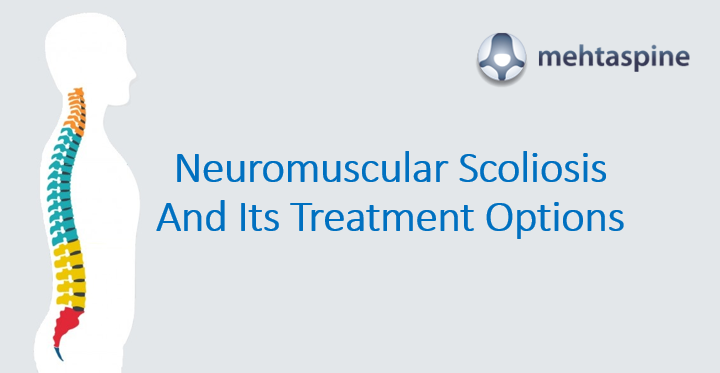Neuromuscular Scoliosis and Its Treatment Options
Congenital, Idiopathic and Neuromuscular scoliosis (NMS) are three common types of scoliosis found in children and adults. While Idiopathic Scoliosis is caused by the reason unknown (as of now), Neuromuscular Scoliosis is caused by nerve and macular disorders in the patients. The neuromuscular conditions like spina bifida, cerebral palsy or even spinal cord injury can weaken or collapse the muscles without whose support the spine loses its shape, develops an abnormal curve and worsens over time. When compared to other forms of Scoliosis, Neuromuscular Scoliosis is more likely to worsen over time, sometimes involving the entire spine, turning it into tall ‘C’.
Symptoms of Neuromuscular Scoliosis:
Early signs of the Neuromuscular Scoliosis include asymmetry in shoulder, hips or rib cage, uneven seating or overall posture, loss of ability to sit without support. As the abnormal curve progresses with age, it alters the anatomy slowly creating walking, sitting and breathing problems, sometimes even creating lung problems in severe cases. In most of the cases, the signs and symptoms are detected in the parents are caretakers early in their childhood.
Taking the medical, physical tests, family history, functional and diagnostic tests into account, and the spine specialist determines the nature, severity and potential progression of the scoliosis curve. X-rays studies are used to diagnose the condition and measure the curvature and rotation of the spine. X-rays are taken in standing and seating position without support to grasp the natural state of the spine under gravity. The spine specialist may order tests like MRI, CT, Ultrasound, bone density scans to further evaluate the condition causing scoliosis. The child is diagnosed with Neuromuscular Scoliosis when the curvature of the spine is greater than 10 degrees.
How is Neuromuscular Scoliosis treated?
Both surgical and non-surgical options are used for Neuromuscular Scoliosis treatment depending upon the severity of the condition. Back bracing, physical therapy and wheelchair modification are some of the non-surgical options that help the spine curvature from getting worse. However, these non-surgical procedures do not correct the spinal curve.
Children and adults with a spinal curve that is large and progressive causing walking, sitting or breathing problems are treated with surgical treatment. There are three types of surgical procedures that can help you correct the curvature and the type of procedure recommended by the spinal surgeon depends on the age, growth factor and skeletal maturity.
Growth rod implantation is suitable for children in the growth phase and Spinal fusion is for children who have reached sufficient skeletal maturity. VEPTR (Vertical expandable prosthetic titanium ribs) are recommended for children whose Scoliosis has affected their lung and rib development.
However, choosing a treatment option is based on a variety of factors and only an experienced spine surgeon specializing in treating spinal deformity conditions can help you diagnose the problem and treat it effectively. An expert spinal surgeon with a remarkable track record in treating versatile cases of Neuromuscular Scoliosis across all age groups, Mr. Jwalant S. Mehta is the Best Spine Specialist in the U.K. If you are in search of a spine specialist for treatment of Neuromuscular Scoliosis in the U.K.


